Hi, I am Scott Paul, a brick paver restoration contractor and business owner with over 30 years of experience in exterior brick paver sealing and protection. I am here to help and offer any tips. If you have any questions, please ask me below any articles or product pages in the Comment Area.
For more information about me, please read my full bio here.
My Top 6 Paver Sealer Ratings in 2025
Looking for the Best Brick Paver Sealers?
If you’re searching for the top-rated brick paver sealers, you’ve come to the right place. With over 30 years of experience restoring concrete and brick pavers, I’ve tested countless products and narrowed down the best-performing options on the market.
The sealers I recommend are the same ones I trust and use daily in my work. These top-tier coatings deliver exceptional results, ensuring long-lasting protection and enhanced beauty for your pavers. Discover the best brick paver sealers available today and protect your investment with confidence.
1. Super Seal 25 Semi-Gloss – Best Overall Paver Sealer
SuperSeal25: Premium Semi-Gloss Paver Sealer
SuperSeal25, similar to SuperSeal30, is a versatile semi-gloss paver sealer ideal for enhancing and protecting brick paver patios, walkways, driveways, and more. This 25% solid, solvent-based, breathable acrylic sealer and curing compound offers outstanding durability and a stunning wet-look finish.
Key Features of SuperSeal25
- Semi-Gloss Shine: Delivers a beautiful semi-gloss finish with 25% high-solids for enhanced visual appeal.
- Color Enhancement: Creates a rich, darkened appearance similar to a wet look, highlighting the natural color of your pavers.
- Comprehensive Protection: Shields brick pavers, decorative concrete, and exposed aggregate from dirt, grime, and harmful UV exposure.
- Breathable Formula: Made with Styrene Acrylic to prevent whitening or hazing and resist UV yellowing over time.
- Joint Sand Stabilization: Solidifies sand joints to reduce weed growth, insect activity, and erosion.
Application Tips
- Recommended Tools: Apply using a Chapin 1949 Concrete Sprayer or a 1/2″ roller cover for best results. Avoid using inexpensive plastic sprayers, as the formula is too thick for them.
- Easy to Use: Whether sprayed or rolled on, SuperSeal25 delivers professional-grade protection and long-lasting performance.
If you’re looking for a sealer that enhances your pavers’ natural beauty while providing excellent protection, SuperSeal25 is a top choice for any project.
Click Here For More Info: SuperSeal25 Semi-Gloss Sealer
Sealer Type: Solvent-based breathable 25% styrene-acrylic sealer
Wet Look: Deep Wet Look
Shine Level: Semi-Gloss
Joint Stabilization: Yes
2. Super Seal 30 – Best Glossy Paver Sealer
SuperSeal30: Premium High-Gloss Concrete and Paver Sealer
SuperSeal30 is a high-gloss concrete sealer designed for a wide range of surfaces, including brick paver patios, driveways, and walkways. Known for its striking gloss finish, this sealer darkens the surface to create a wet-look effect while providing superior protection and durability.
Key Features of SuperSeal30
- High-Gloss Finish: Offers a 30% solid formula for a bold, glossy shine that enhances the color of pavers and concrete surfaces.
- Color Enhancement: Darkens and enriches the surface, delivering a vibrant wet-look appearance.
- Comprehensive Protection: Seals brick pavers, decorative concrete, and exposed aggregate against dirt, grime, and UV damage.
- Breathable Formula: Crafted with Styrene Acrylic, it prevents whitening or hazing and resists UV yellowing.
- Joint Sand Stabilization: Solidifies sand joints, helping to reduce weeds, insect intrusion, and erosion.
Application Tips
- Recommended Application Method: Apply SuperSeal30 using a 1/2″ roller cover for smooth and even coverage. Note: This sealer is too thick for sprayers.
- Durable and Long-Lasting: Its high-solids formula ensures lasting protection while enhancing the natural beauty of your surfaces.
SuperSeal30 is a trusted choice for homeowners and contractors looking for a high-performance sealer that delivers both style and strength.
Click Here For More Info: SuperSeal30 Paver Sealer
Sealer Type: Solvent-based breathable 30% styrene-acrylic sealer
Wet Look: Deep Wet Look
Shine Level: Higher Gloss
Joint Stabilization: Yes
3. Supreme Shield SB-600 – Best Wet Look Paver Sealer
SUPREME SHIELD SB: Solvent-Based Penetrating Sealer for Concrete and Pavers
SUPREME SHIELD SB is a premium solvent-based penetrating sealer, specifically formulated for stamped concrete, concrete pavers, and other porous concrete surfaces. This innovative sealer enhances and preserves the natural color of your surface, providing a subtle wet look without the gloss or plastic appearance associated with traditional film-forming sealers.
Key Features of SUPREME SHIELD SB
- Natural Color Enhancement: Brings out the natural beauty of your pavers and concrete with a wet look while avoiding shine or gloss.
- Comprehensive Protection: Shields brick pavers and decorative concrete from water, salt, stains, and oil penetration.
- Breathable Formula: Made with Styrene Acrylic to ensure the surface stays breathable and resists whitening.
- Durability: Repels water and oil to prevent staining, making it ideal for long-term protection.
- Immediate Results: Works as soon as it’s applied, offering fast and effective sealing.
- Easy to Use: Straightforward application process for professionals and DIY users alike.
SUPREME SHIELD SB is perfect for those who want to enhance and protect their surfaces without the high-gloss finish. Its water, stain, and oil resistance make it a versatile choice for maintaining the beauty and longevity of your concrete and pavers.
Click Here For More Info: Supreme Shield SB-600
Sealer Type: Solvent-based breathable styrene-acrylic sealer
Wet Look: Deep Wet Look
Shine Level: No Gloss or Shine
Joint Stabilization: Small amount
4. Surebond SB-6000 – Best Water-Based Wet Look Paver Sealer
SB-6000 Wet Look Sealer: Enhance and Protect Your Paving Stones
The SB-6000 Wet Look Sealer is a water-based, exterior-quality urethane surface sealer designed to seal and enhance the natural beauty of paving stones. This premium sealer adds a luxurious wet look, brightening and enriching the natural colors of your pavement. Its breathable formula ensures that naturally occurring efflorescence is not trapped, allowing it to be applied immediately after installation while reducing freeze-thaw damage.
Key Benefits of SB-6000 Wet Look Sealer
- Adds a Rich Wet Look: Elevates the appearance of your pavers with a vibrant, polished finish.
- Fast-Drying Formula: Ensures quick application and readiness for traffic.
- Breathable Protection: Prevents trapping of efflorescence, allowing moisture to escape naturally.
- Environmentally Friendly: A sustainable choice for exterior sealing needs.
- Enhanced Durability: Protects surfaces from water penetration, salt, acid, and staining.
Whether you’re sealing newly installed pavers or refreshing older surfaces, SB-6000 Wet Look Sealer offers reliable protection and stunning results. Perfect for homeowners and professionals seeking both performance and eco-conscious solutions.
Click Here For More Info: SB-6000 Wet Look Sealer
Sealer Type: Wet-Look water-based, exterior quality urethane surface sealer.
Wet Look: Adequate Wet Look
Shine Level: No shine
Joint Stabilization: No
5. Super Seal-M – Best Water-Repellent Paver Sealer
SuperSeal-M: Non-Gloss Water-Based Penetrating Sealer
SuperSeal-M is a high-performance water-based penetrating sealer designed to protect bricks, stone, and concrete surfaces without altering their natural appearance. Unlike traditional sealers, SuperSeal-M does not leave a sheen or “wet” look, making it an ideal choice for those who want invisible yet effective protection.
Key Features of SuperSeal-M
- Invisible Protection: Does not add sheen or darkening, preserving the natural look of the surface.
- Advanced Water Repellency: A blend of silox, silane, and siloxane creates fast beading action and superior water resistance.
- Versatile Application: Can be applied to “green” concrete once bleed water is gone.
- Freeze/Thaw Resistance: Prevents spalling and damage caused by salt and freeze-thaw cycles.
- Safe and Compliant: Low VOC formula that’s easy to use and clean up.
- Non-Slip Finish: Does not leave a slippery film, ensuring safe use on porous surfaces.
SuperSeal-M is perfect for those seeking reliable protection against water and environmental damage while maintaining the natural beauty of their surfaces. Whether for residential or commercial projects, it delivers excellent durability and easy application.
Click Here For More Info: Super Seal-M Water Repellent
Sealer Type: Water-based siloxane sealer
Wet Look: No Wet Look
Shine Level: No Gloss
Joint Stabilization: No
6. Masonry Saver Paver Sealer – Best Water-Based Paver Sealer
MasonrySaver Low Gloss Paver Sealer: Durable Protection and Subtle Beauty
MasonrySaver Low Gloss Paver Sealer is a water-based, clear sealer specially designed to protect and enhance the natural beauty of clay brick and cement patio paver stones. Formulated with premium-grade acrylic resin, this sealer provides long-lasting protection against water and harmful UV rays while adding a subtle low-gloss finish.
Features and Benefits
- Low-Gloss Finish: Enhances the appearance of paver stones with a refined, understated shine.
- Comprehensive Protection: Guards against water penetration and sun damage, extending the life of your pavers.
- Versatile Application: Suitable for most horizontal, above-grade surfaces, including clay brick, cement paver stones, and natural stone.
- Durable Performance: Engineered for lasting durability, making it ideal for patios, walkways, and other outdoor spaces.
- Eco-Friendly Formula: Water-based for safer application and easier cleanup.
Perfect for residential and commercial use, MasonrySaver Low Gloss Paver Sealer is the ideal choice for preserving and beautifying your paver surfaces with a professional-grade finish.
Click Here For More Info: Masonry Saver Paver Sealer
Sealer Type: Water-based breathable acrylic sealer
Wet Look: Adequate Wet Look
Shine Level: Satin Shine or High Gloss
Joint Stabilization: Yes
Why Seal Brick Pavers
Paver Sealers can enhance the natural colors of your brick and come in Matte, Semi-Gloss, and Higher-Gloss shine. If a “shiny” appearance is not desired, you can add a Non-Shiny Concrete Sealer for Protection only. There are also Joint Sand Stabilizing Sealers that will solidify the sand between paver stones.
My Brick Paver Restoration Tips
- The use of a pressure washer is suggested when cleaning the brick pavers. Cleaning chemicals are not needed when removing dirt, grime, and vegetation. If you have stains on your brick pavers, we suggest using a cleaner specific to the type of stain. i.e., a rust remover to clean rust, an oil stain remover to clean oil drips, etc. Paver Cleaners
- Removal of old paver sealers is suggested if your previous sealer has failed. Usually, this is noticeable by a yellowing or whitening of the old sealer. If you do not have any discoloration, then it is not necessary to remove the old coatings. Paver Stripper
- Allow the brick pavers to dry thoroughly for 1-2 days.
- If needed, sweep in new jointing sand between the stones. You could use many types of sand. The most popular is play sand or baby sand. Other options can be joint sand and polymeric sand. These types of sand are usually found only at paver stone yards. Make sure the sand is dry and not wet!
- Blow or sweep off excess sand. We strongly suggest that the sand level is at least 1/4″ from the top of the beveled edge of the paver bricks. Be very careful when removing all the sand!
- Apply sealer by rolling or spraying. If rolling, exercise extreme caution to prevent removing sand from the joints and leaving it on top of the pavers! A sponge-type roller usually works better than a nap roller. If spraying a solvent-based sealer, you must use a heavy-duty metal sprayer. Cheap plastic sprayers will not work with solvent-based brick paver sealers, but they will work with water-based sealers. Do not apply sealer to wet or high-moisture content pavers! The sealer will turn whitish.
- Let dry for 3-4 fours for foot traffic and 24 hours for vehicular or heavy-duty traffic.
*Make sure that you follow all manufacturer’s instructions.
When to Seal New Pavers
Installing pavers is a fantastic way to enhance your home’s curb appeal and increase property value. Pavers are versatile and widely used for driveways, sidewalks, patios, pool decks, and more. With countless design options in type, shape, size, and color, choosing the perfect pavers can be an exciting part of the process. Once installed, protecting your investment by sealing the pavers is essential.
Why Seal New Pavers?
Sealing pavers not only enhances their natural beauty but also provides several practical benefits:
- Structural Durability: A sealer helps solidify the joint sand, locking the pavers together to create a more stable surface.
- Erosion Resistance: Sealing acts as a barrier, preventing joint sand erosion and protecting against weathering.
- Visual Appeal: Depending on the sealer, it can amplify the vibrancy of the pavers’ colors, improving their overall appearance.
When is the Best Time to Seal New Pavers?
There’s some debate about the timing, but here are the general guidelines:
- Immediate Sealing: New pavers can be sealed as soon as the surface and surrounding ground are completely dry after installation. A breathable “cure and seal” paver sealer is recommended for immediate application.
- Waiting Period for Efflorescence: Some experts suggest waiting a few weeks to monitor for efflorescence. Efflorescence is the natural release of salts from the pavers, which can create a white haze on the surface. If this occurs, clean the pavers with an efflorescence cleaner before applying the sealer to ensure optimal results.
Sealing your new pavers at the right time and with the right product ensures long-lasting protection and maintains their beauty for years to come.
My Breathable Paver Sealers
- SuperSeal25, SuperSeal30, SuperSeal Matte, Super Seal VOC, and Supreme Shield SB-600
- Surebond SB-6000, Surebond SB-8700
Sealing new pavers is a good idea, and knowing when to seal them is the key to a successful project. If well-kept and maintained regularly, sealed pavers can last many years and give you prolonged use time.
How I Maintain Brick Paver Sealers
I have found that Brick Paver Sealers will dull and lose their luster over time but will still “seal” the surface for many years. Using my tips below, you can extend the life and look of your paver sealer without the need to seal it every year.
- Start by using a Paver Sealer
- Apply a solvent such as Aromatic 100 to restore the sealer’s appearance every 12-18 months. This solvent will reset the current sealer, making it look brand new. The sealer will remain intact, but it can dull from dirt and Ultraviolet radiation. You can do this process 1-2 times before reapplying the sealer is necessary.
- I reapply a Paver Sealer every 2-3 years as needed
These simple steps will save you the money of sealing too often and the potential issues of overapplication.
Questions on Brick Paver Sealers? Ask me in the Comment Area



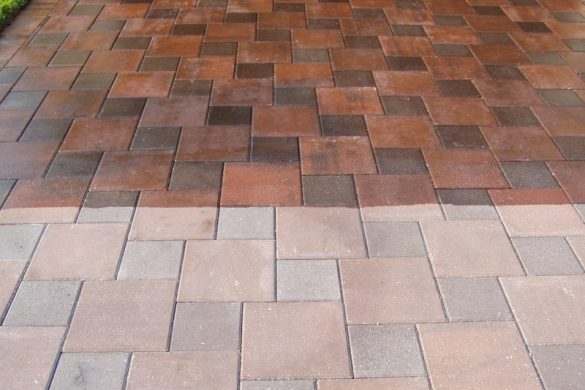
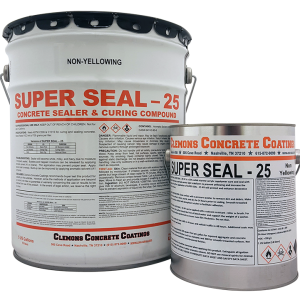
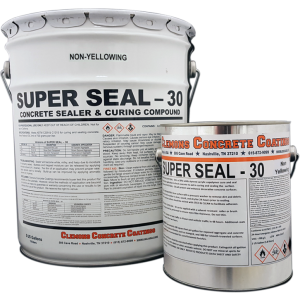
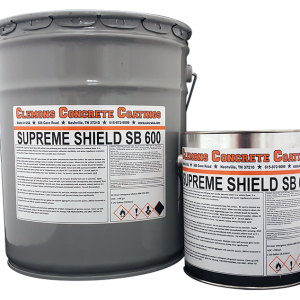
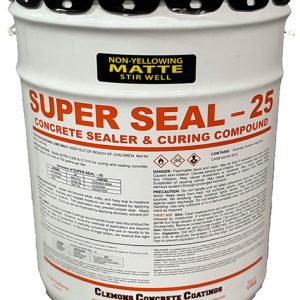
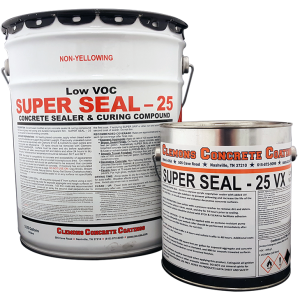

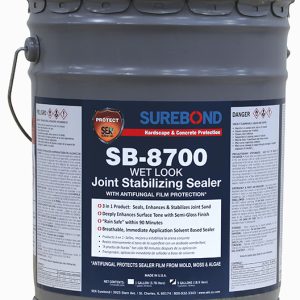
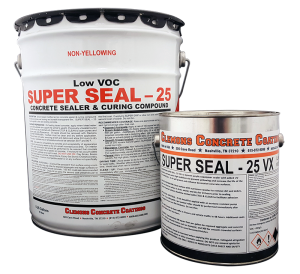
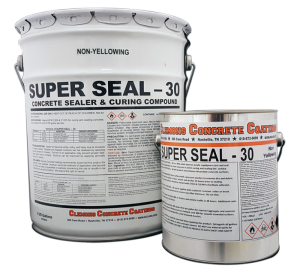
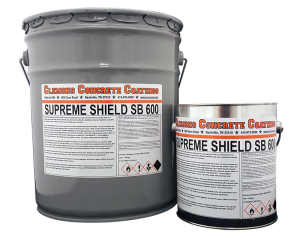
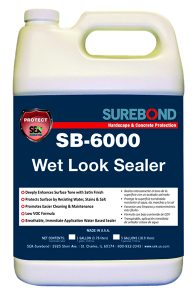
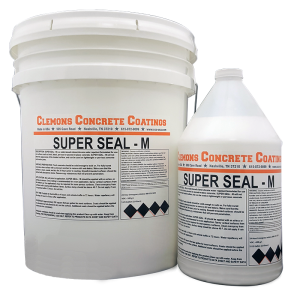
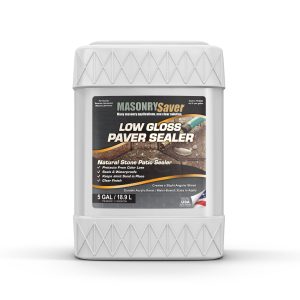

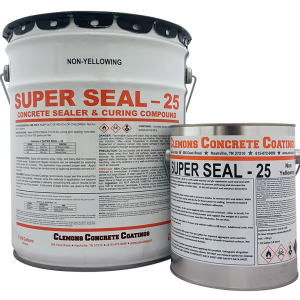
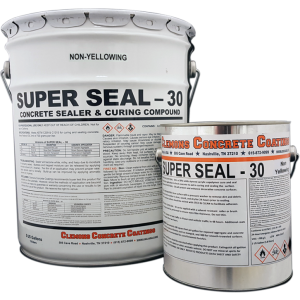
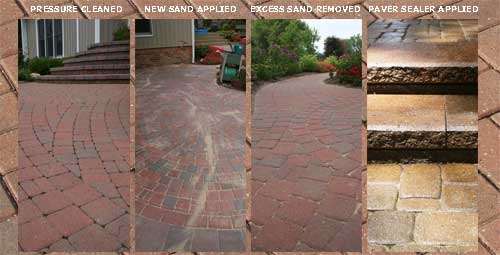
I am in Florida very hot in summer. Will SB-8700 Wet Look Joint Stabilizing Sealer 5 Gallon is good choice? Than you
Yes that works well. Also look at Super Seal 25 paver sealer.
Thank you so much. Please see attached picture, these are uneven pavers not flat ones. I am going to wash and use acrylic sand. You think I should use 30, 25 or 8700 I am in Florida so will need breathable that doesn’t create a film or go yellow. These pavers were sealed 2 times, last done three years ago. Thanks Naeem
Sorry for the delay, I did not see your question. Look at the SS25. If using a polymeric sand, make sure to avoid the brands that can create what is called a poly sand haze.
https://www.concretesealerreview.com/what-is-poly-sand-haze/
I have newly laid pavers, there appears to be some (white) efflorence showing in some of the pavers. Can I apply SEK 6000 or would I need to use a cleaner on the new pavers first? Or would you recommend a different sealer?
Add some pics in the comments.
Which sealer is used in this picture?
Super Seal-25: https://www.brickpaversealer.com/superseal25-semi-gloss-5-gallon
Scott, I have Unilock pavers that have faded. I pressure wash them but still not much difference. How do I bring the colors back? I want to do something before I seal them
Have they been sealed prior?
Yes they were originally sealed 15 years ago and again 3 years ago.
It looks like your old sealer has discolored and turned white. You will have to strip this first: https://www.brickpaversealer.com/paver-sealer-stripper
Once it is removed, look at the Supreme Shield SB-600 sealer:
https://www.brickpaversealer.com/supreme-shield-sb-600-wet-look-concrete-sealer